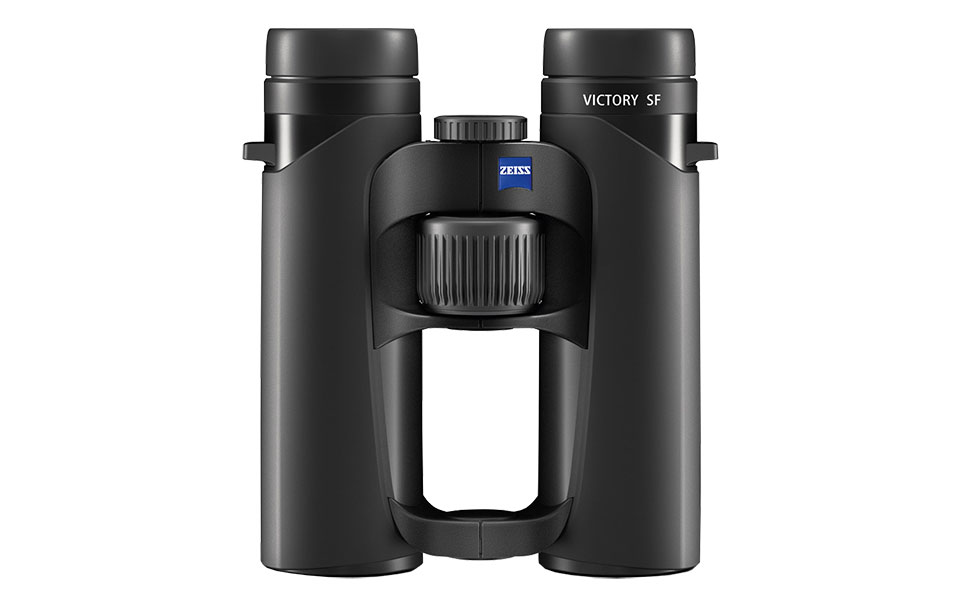Zeiss Victory SF 8x32 binocular
It has been six years since Zeiss launched its excellent 42 mm Victory SF, 'smart focus' binoculars (Birdwatch 265: 70-71), but earlier this year, the high-end German manufacturer lifted the veil on two new 32 mm models which are available in stores now.
Having been fortunate to attend a February 'sneak preview' event, which included a chance to try out both the 8x and 10x magnification models, I was given the opportunity to further field test the 8x32 – which did not disappoint!
It delivered a much-anticipated high-quality image and a surprisingly high level of brightness. At 155 m at 1,000 m, this model now boasts the widest field of view in its class, beating its big brother, the 8x42, by 7 m.

The design of the latter has been largely carried forward to the 32 mm model. Some improvements have been made, though, most notably to the eyecups. These had been flagged up as uncomfortable on the larger model by some users – a problem which has been addressed on the 32 mm versions.
The eyecups are finished in soft rubber and I found them very comfortable against my eyes. They twist out, firmly click-locking at three points above the base setting. However, although I was able to see the full field of view at the base, first and second settings, it was notably diminished at the highest position. The binocular's serial number is etched into the right ocular, both digitally and in QR format.
It's worth mentioning at this point that the articulated rainguard supplied with this binocular is relatively soft, very flexible and fits the eyecups perfectly. Unlike many manufacturers' rainguards, it is nice and easy to slip on and off quickly, without inadvertently altering the position of the eyecups.
Back to the body. The magnesium alloy chassis is covered in smooth, non-slip rubber with minimal contouring. There are no cutaways or thumb-rests, but they aren't necessary, as the binocular is light and easy to hold as a result of its open-bridge design. There is plenty of space for an adequate, three-finger grip between the middle and distal bridges. This leaves the index finger free to operate the central focusing wheel, importantly allowing it to be kept straight and comfortable. The positioning of the wheel also means that the strap lugs don't come into contact with the hand at any point, further enhancing the comfort factor.
To additionally improve the user's experience, Zeiss has also addressed the balance of the SF with its 'ErgoBalance Concept', which moves the weight of the binocular towards the ocular, so that your muscles do not need to contend with a normally heavier objective system.
All of the above comes at a price, and at 152 mm, the overall length of this model exceeds the average length normally associated with a 32 mm binocular.
Focusing is wonderfully smooth, quick and easy, with 1.6 clockwise turns between the close-focus distance of 1.95 m and infinity, although only a quarter of a turn is required to make the adjustment between subjects between approximately 8 m and 'long distance'. The single-eye adjustment is made simply by pulling up and rotating the shallow, scaled wheel, which is separated from the main focus wheel by the proximal bridge, and locking the setting by pushing it back down into place.
But what about the all-important image – is it really that good? The short answer is yes. This small binocular packs a big punch. The fact that just about every element associated with high-quality optics has been integrated into its design promises satisfaction from the outset. High-transmission Schott glass, fluoride lenses, full multi-layer coating and Zeiss field-flattener technology all combine to deliver.
And it does. Straightaway the colour fidelity, contrast and image brightness jump right out. One aspect of the SF 42 mm that has always impressed me is the image's '3D' effect, which is still present in this new 32 mm model. This was immediately obvious when watching a family of Blackcaps in my garden and adjacent woodland, which was almost a 'reach-out-and-touch' experience in itself.
The wide field of view proved attractive when scanning large bodies of water and checking the periphery of the image against buildings and pylons revealed edge-to-edge sharpness and only a modicum of field curvature. Chromatic aberration is minimal and the image, generally, falls into the 'cold' category. I picked up a distant flock of Black-tailed Godwits flying over one of my local gravel pits: crisp, sharp, detailed and immediately identifiable.
I have to say I cannot find fault with this binocular, but its physical length and price may not suit some potential buyers. Nevertheless, in my book, it's excellent!
The Victory SF 32 mm comes with a rainguard, objective guard, comfortable, contoured lanyard and a soft, environmentally friendly carry pouch, which is made out of recycled plastic.
For further details on the Victory SF 32, click here to visit Zeiss's website.
Further info
- Price: £2,065
- Size: 152x112 mm
- Weight: 600 g
- Field of view: 155 m at 1,000 m
- Light transmission: 90%
- Close focus: 1.95 m
- Gas-filled: yes
- Waterproof: yes
- Guarantee: 10 years
Verdict
+ Excellent colour fidelity, contrast and image brightness
+ Edge-to-edge sharpness
- Overall length somewhat high


